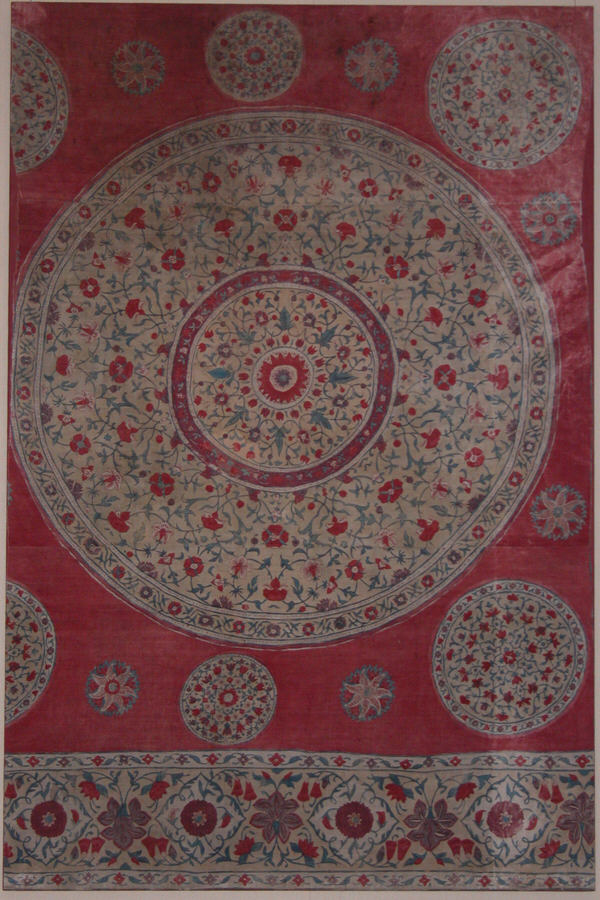Panel of a Tent Lining
This panel was decorated using a traditional dyeing technique called kalamkari. This technique ws associated with the city of Burhanpur, which became a center for the production of dyed textiles in the late seventeenth and eighteenth centuries. Burhanpur textiles show great influence from the nearby Mughal tradition, favoring floral motifs within the cusped arches and arabesque decoration. On the Coromandel Coast, different types of kalamkari textiles were produced, including palampores (bed covers) made for the European market, and sarongs and ceremonial hangings traded to Southeast Asia. This panel lined an eighteenth-century Ottoman tent in Bulgaria, and its medallion-based design was probably made to suit that market.
This image cannot be enlarged, viewed at full screen, or downloaded.
This artwork is meant to be viewed from right to left. Scroll left to view more.



